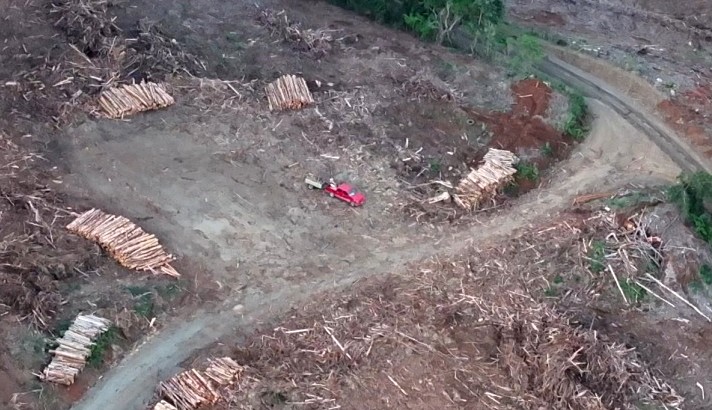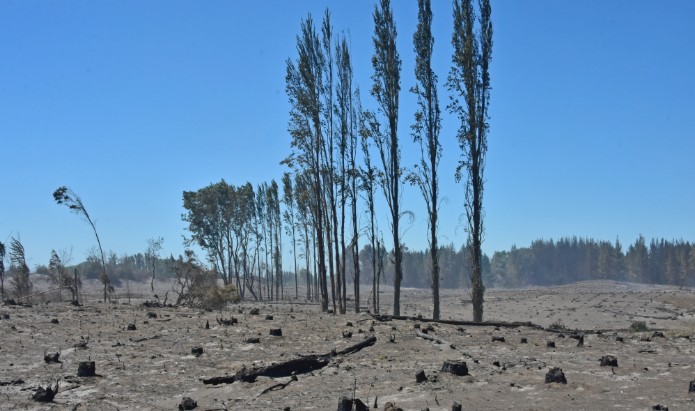Study Shows Combination of Native Forests and Plantations Contributes to Water Sustainability
Additionally, it confirms the vital importance of reforestation as a concrete action to combat climate change. Dr. Roberto Pizarro, director of the UNESCO Chair in Surface Hydrology at the University of Talca, and Pablo García, researcher at the Department of Civil and Environmental Engineering at the Colorado School of Mines in the United States and part of UNESCO's Intergovernmental Hydrological Program—who were among the 10 researchers involved—share the scope of this study.
Every study begins with a vital question. In this case, doubts arose for Roberto Pizarro during a talk with farmers about water, where some assertions did not align with the data he had as an academic and researcher. "Pines consume all the water," some attendees claimed, to which he responded with the question, "When do they consume water?" The attendees answered, "In spring and summer." "And when does it rain for us?" "In winter," they replied. "And if the pines aren’t irrigated, where do they get their water?" "From the groundwater," the farmers said. Pizarro continued: "And how deep are the roots of the pines?" "Two to three meters," they answered. "And how deep is the groundwater?" "Between 20 and 30 meters," was the response. Something didn’t add up.
It was 2014, and the director of the UNESCO Chair in Surface Hydrology at the University of Talca noticed something didn’t align in his measurements. He was studying the behavior of rivers and groundwater in the central zone of the country when he observed that in all high-altitude areas with forests—even monoculture plantations like pine or eucalyptus—water presence showed positive trends over time, despite drought conditions.
This marked the beginning of an extensive study titled "The Large-Scale Effect of Forest Cover on Long-Term Streamflow Variations in Mediterranean Basins of Central Chile." Ten researchers from the UNESCO Chair in Surface Hydrology at the University of Talca and other Chilean and U.S. universities participated, analyzing the behavior of 42 basins in the country from 1994 to 2015 using data from the General Water Directorate (DGA), covering regions from O’Higgins to Los Ríos.
Forest ecosystems play a crucial role in hydrological processes such as surface and subsurface runoff, as well as water storage in river basins. Having evidence of the effects of forests on the long-term water balance of Chile's Mediterranean basins would allow for important decision-making in an unusual Mediterranean climate zone characterized by a well-defined annual cycle of dry summers and wet or rainy winters.
The study identified and evaluated areas covered by native forests and plantations, as well as changes occurring in each basin through streamflow variations and forest cover indicators. The results revealed that streamflow variations are positive and significant when there is greater forest cover. Intra-basin relationships assessed for both types of species highlighted the significant role of native forests and mixed stands as key ecosystems for the long-term conservation of summer streamflow in central Chile's Mediterranean basins.
Pablo, monocultures are often blamed for high water consumption. Does this research debunk that?
This research does not focus specifically on forest monocultures but includes them. The conclusion from this important study is that forested areas in general—native forests and plantations—contribute to large-scale water production, especially during summer months.
Regarding plantations, does their presence on slopes relate to water availability, considering both consumption and retention?
The hydrological effects of plantations can be beneficial or adverse, depending on many variables, with climate being the most relevant. In fact, in most regions globally, rainfall occurs in summer months—when trees are active—so they absorb much of the rainwater that infiltrates the soil. In this sense, central Chile is an exception, as it is well known that rain falls mostly in winter, when trees are dormant and thus do not consume water, allowing rainfall to percolate and recharge groundwater. This explains the clear trend of increasing summer streamflows, despite some losses due to canopy interception, as in any forested area. In other words, if forested areas are on slopes, far from groundwater and watercourses, they obtain their water from soil moisture during summer months.
Roberto Pizarro adds on this point: "We must contextualize and be fair to each situation. Chile depends on water; its consumption has increased, as has its wealth proportionally. As a country, we are consuming more water, and in a climate change scenario, we lack a culture of caring for this valuable resource. What happens from a forestry perspective? Plantations have a role to play. Years ago, there was misuse of natural resources, leading to severe erosion and evident desertification in Malleco and Biobío. This process has been reversed through plantations, which help retain soil—the most valuable aspect. There is a relationship between vegetation and soil that allows us to retain soil in high-altitude areas, enabling water to circulate more slowly and infiltrate the ground, recharging aquifers."
"The role of vegetation is positive because in winter, when they don’t consume water, they become an obstacle to water flow, especially in a mountainous country. Combined with the fact that when organic matter falls to the ground, it creates a cushion-like layer that retains water like a sponge, allowing it to reach underground aquifers and preventing rapid runoff. It’s a virtuous cycle, and these are nature-based solutions, as UNESCO calls them," Pizarro notes.
Roberto, where is the role of forested areas more positive—in basins with native forests or plantations?
In basins with native forests, because they have a higher proportion and are more established and balanced. In areas with plantations, the relationships were negative or lower, but this could be due to the limited number of basins with adequate plantation cover. However, the best results were seen in mixed areas with both native forests and plantations, indicating a beneficial combination.
We must be smart in using our natural resources. Based on this data, we must use the information to establish policies to mitigate climate change, with greater reforestation—preferably with native species—and maximizing aquifer recharge. How do we achieve aquifer recharge? By using a mix of native vegetation and plantations, but we must also consider that fast-growing timber production captures CO2, sequesters carbon, and reduces greenhouse gas effects.
Pablo, could reforesting desert areas be an option to combat drought in the country?
Indeed. We are fortunate to have a very unusual climate where rainfall is concentrated in winter, so one way to mitigate climate change effects is through reforestation with native species in high-altitude areas, far from aquifers and watercourses.
Based on your experience, how should Chile advance in reforestation, and with which species?
Despite all efforts at the national level, Chile is still in its infancy regarding reforestation. With much of our territory degraded, we must invest much more in large-scale reforestation projects, learning from international experience. For example, China assigned 60,000 soldiers solely to plant trees in the late 2010s, reforesting 3.6 million hectares by 2021. Even more impressive, India planted 66 million trees in just 12 hours in 2017, with government and citizen support—a campaign replicated in Ethiopia, where 350 million trees were planted in 12 hours (2019), breaking the world record. However, the largest reforestation project is Africa’s "Great Green Wall," a 7,775 km long and 15 km wide belt of "greened" land from Senegal to Djibouti. In this sense, Chile must also undertake massive reforestation, prioritizing native species and using the grove method, which has lower costs, higher survival rates, demands less water, and results in faster growth—producing trees several meters tall in just a few years. Additionally, the use of hydrogels is unavoidable.
What is your personal take on this important evidence and conclusions?
This study represents the starting point for much-needed research to more precisely determine the large-scale hydrological effects of plantations, defining the sustainable limits of this important land use, considering climate change, ecology, and society.
Given the evidence, Roberto Pizarro calls for rethinking public water policies. "We must make projections based on studies and real data, not ideologies. Many believe pines erode and dry out planted areas, but this has been disproven," Pizarro concludes. "I am neither for nor against forestry, but we must speak with scientific evidence. What we’ve shown is that in central Chile’s forests—both native and plantations—there is better water retention from winter rainfall compared to bare areas."
The study was published last April in the prestigious scientific journal *Sustainability* and is available online at the following link: https://www.mdpi.com/2071-1050/14/8/4443/pdf?version=1649734411

















